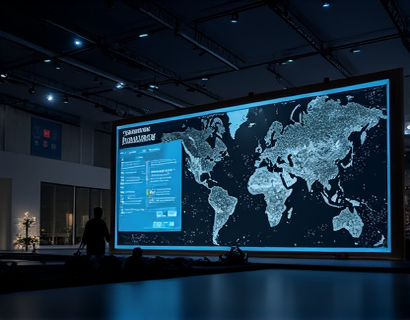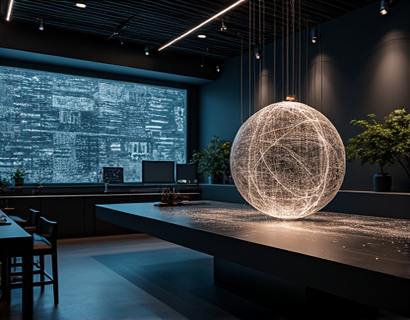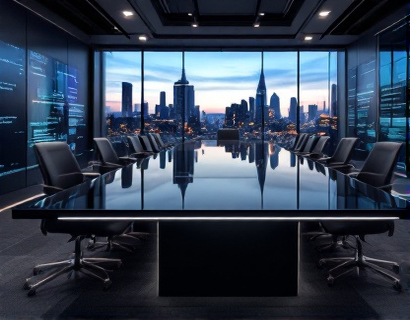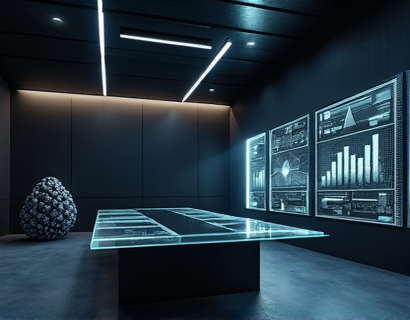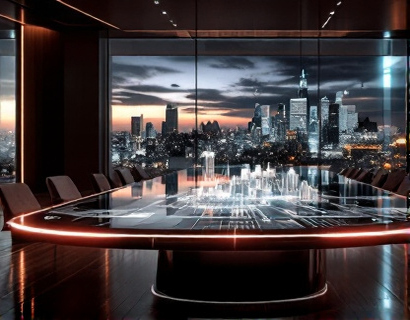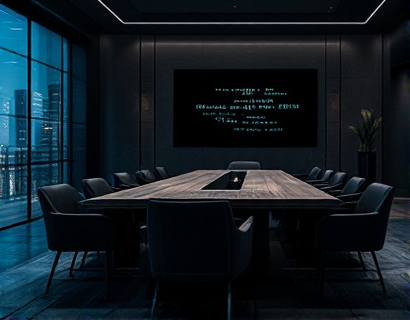Transforming Daily Life with Augmented Reality E-Commerce
In the rapidly evolving landscape of technology, augmented reality (AR) has emerged as a transformative force, particularly in the realm of e-commerce. This innovative approach blends the physical world with digital elements, offering consumers unprecedented ways to interact with products before making a purchase. For tech-savvy individuals seeking to enhance their lifestyle, AR e-commerce presents a compelling opportunity to experience products in a more immersive and personalized manner.
The integration of AR into online shopping platforms has revolutionized the way consumers engage with products. Gone are the days of relying solely on images and descriptions. Today, shoppers can visualize products in their own environment, gaining a deeper understanding of the item's size, color, and functionality. This not only enhances the shopping experience but also reduces the likelihood of returns, benefiting both consumers and retailers.
Understanding Augmented Reality in E-Commerce
Augmented reality in e-commerce involves the use of digital overlays to enhance the real world. These overlays can be viewed through smartphones, tablets, or specialized AR glasses. In the context of online shopping, AR technology allows users to see how products would look and function in their actual space. For instance, a furniture shop might offer an AR app that lets customers place virtual sofas in their living room to see if the size and style fit their decor.
The technology behind AR e-commerce is rooted in computer vision and machine learning. These technologies enable the accurate placement and scaling of digital objects within the real world. When a user points their device's camera at a surface, the AR system analyzes the environment, identifies key features, and overlays the product image accordingly. This seamless integration creates a convincing and interactive experience that traditional e-commerce cannot match.
Benefits of AR for Consumers
For consumers, the benefits of AR in e-commerce are numerous. Firstly, it provides a more accurate representation of products, reducing the uncertainty that often accompanies online shopping. This can lead to increased customer confidence and satisfaction. Secondly, AR enhances the decision-making process by allowing users to visualize products in context, making it easier to assess fit, style, and functionality. This can result in fewer returns and exchanges, saving both time and resources.
Moreover, AR offers an engaging and fun shopping experience. It transforms the mundane task of online shopping into an interactive adventure. Users can experiment with different products and configurations, fostering a sense of creativity and personalization. This level of engagement can lead to longer browsing times and a higher likelihood of making a purchase.
Lifestyle Enhancement Through AR Products
The applications of AR in e-commerce extend beyond mere product visualization. It has the potential to significantly enhance various aspects of daily life, from home decor to fashion and beyond. For instance, in the realm of home decor, AR can help users redesign their spaces without the need for physical changes. They can try out different furniture arrangements, wall colors, and accessory placements, all in a virtual environment. This not only saves time and resources but also inspires creativity and innovation in home design.
In the fashion industry, AR has revolutionized the way consumers explore and purchase clothing and accessories. Virtual try-on features allow users to see how clothes fit and look without the need for physical fitting rooms. This is particularly beneficial for online shopping, where fitting rooms are not an option. AR can also provide size recommendations based on the user's body measurements, ensuring a better fit and reducing the frustration of returns.
Fashion and Beauty
In the fashion and beauty sector, AR has opened up new possibilities for personal expression and experimentation. Users can virtually try on makeup, hairstyles, and accessories, getting a realistic preview of how these items will look on them. This is especially useful for those who are hesitant to purchase physical products due to concerns about color matching or style suitability. AR enables a more trial-and-error approach, encouraging users to explore a wider range of options and discover new looks.
Moreover, AR can enhance the shopping experience in physical stores as well. Retailers can implement AR mirrors that allow customers to see how different outfits look without the need to physically change clothes. This not only streamlines the shopping process but also makes it more enjoyable and interactive.
Home and Garden
For home and garden enthusiasts, AR offers practical tools for planning and execution. AR apps can help users visualize furniture arrangements, paint colors, and landscaping designs before making any purchases. This is particularly useful for DIY projects or major renovations, where accurate planning is crucial. By seeing how changes will look in real-time, users can make more informed decisions, leading to better outcomes and a more satisfying final result.
Additionally, AR can provide step-by-step guidance for complex tasks, such as assembling furniture or installing fixtures. Interactive tutorials and overlays can simplify the process, making it accessible even to those with limited experience. This not only enhances the user's confidence but also reduces the likelihood of errors and wasted materials.
Technological Advancements in AR E-Commerce
The evolution of AR technology has been driven by advancements in hardware and software. Modern smartphones and tablets come equipped with powerful cameras, sensors, and processors that can handle complex AR tasks. These devices, combined with sophisticated AR development frameworks, have made it possible to create high-quality, user-friendly AR experiences.
One significant advancement is the improvement in markerless AR, which does not require specific markers or tags to function. Instead, it uses environmental understanding and machine learning to place digital objects accurately. This technology has broadened the scope of AR applications, making them more versatile and accessible to a wider audience.
Another notable development is the integration of AR with other technologies, such as artificial intelligence (AI) and the Internet of Things (IoT). AI can enhance AR experiences by providing personalized recommendations based on user preferences and behavior. IoT devices can be controlled or monitored through AR interfaces, creating a seamless and interconnected ecosystem.
Challenges and Considerations
Despite its numerous benefits, AR e-commerce is not without challenges. One of the primary concerns is the variability in device capabilities. Not all smartphones and tablets have the same AR capabilities, which can lead to inconsistent user experiences. Retailers must ensure that their AR applications are optimized for a range of devices to provide a smooth and enjoyable experience for all users.
Another challenge is the need for high-quality content. For AR to be effective, the digital products must be accurately represented and interactive. Poorly designed AR experiences can frustrate users and undermine the benefits of the technology. Therefore, brands and developers must invest in creating high-fidelity 3D models and intuitive user interfaces.
Privacy and data security are also critical considerations. AR applications often require access to the user's camera and environment, raising concerns about data privacy. Retailers must be transparent about data usage and implement robust security measures to protect user information.
Future Trends in AR E-Commerce
Looking ahead, the future of AR e-commerce is promising, with several trends poised to shape the industry. One such trend is the rise of AR-enabled smart glasses, which offer a more hands-free and immersive experience compared to smartphones and tablets. These devices are expected to become more affordable and widely adopted, further integrating AR into daily life.
Another trend is the increased use of AR in social commerce. Platforms that allow users to share AR experiences and collaborate in virtual spaces are gaining popularity. This social aspect can enhance the shopping experience by enabling peer recommendations and community-driven content creation.
Additionally, the integration of AR with e-commerce will likely extend to new categories, such as virtual reality (VR) and mixed reality (MR). These technologies can create even more immersive and interactive shopping environments, blurring the lines between the physical and digital worlds.
Enhancing Customer Experience
To fully leverage the potential of AR in e-commerce, brands must focus on enhancing the overall customer experience. This involves not only providing accurate and engaging AR experiences but also ensuring that the entire shopping journey is seamless and user-friendly. Intuitive navigation, fast loading times, and responsive customer support are essential components of a successful AR e-commerce platform.
Personalization plays a crucial role in customer satisfaction. By using data and AI to understand user preferences and behavior, brands can offer tailored recommendations and customized AR experiences. This level of personalization can foster a deeper connection between the brand and the consumer, leading to increased loyalty and repeat business.
Conclusion
Augmented reality e-commerce represents a significant leap forward in the way we shop and interact with products. By providing immersive, personalized, and practical experiences, AR has the potential to transform the retail landscape and enhance daily life in countless ways. As technology continues to advance and more brands embrace AR, consumers can look forward to a future where shopping is not just a transaction but an engaging and enjoyable experience.




















